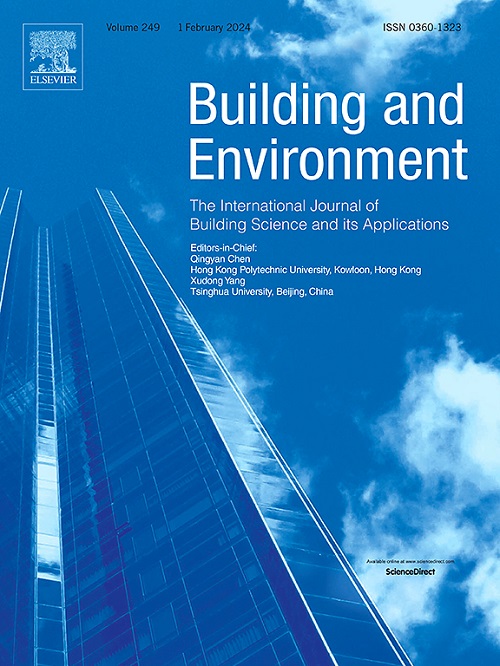Research on an adaptive prediction method for restaurant air quality based on occupancy detection
IF 7.1
1区 工程技术
Q1 CONSTRUCTION & BUILDING TECHNOLOGY
引用次数: 0
Abstract
This study evaluates the impact of personnel on air quality in air-conditioned restaurant environments during winter, summer, and transitional seasons, characterized by the peculiarities of personnel movement, high concentration of personnel in a short period of time, poor ventilation and high personnel density, leading to the accumulation of pollutants that can severely damage personnel health. This study examines carbon dioxide (CO2) and particulate matter (PM) concentrations and proposes an online adaptive model for their prediction.
Environmental influence factors are analyzed through correlations of measured data, and appropriate input parameters (time-lagged cumulative number of people) are selected. The Auto-Regressive with Exogenous Inputs (ARX) model is used to predict the change of air quality with the movement and number of people, compared with classical models (LR, DT, SVM, ENS, GPR, NN, VARX). Results show that the ARX model performs excellently in predicting restaurant environments; the effect of different environmental factors on the predictive effectiveness of the model was also explored. When combined with real-time sensor data and AIC-based adaptive optimization, the prediction accuracy is further improved by more than 25 %. The R2 of the ARX model is 0.9549, the MAE is 0.8352 μg/m3 and the MAPE is 3.17 %. The adaptively optimized model can be adapted to different environments, overcoming the problem of poor adaptability of such models. Our results enable effective environmental control strategies in public spaces, contributing to Sustainable Development Goal (SDG) 3: Good Health and Well-being by reducing health risks associated with indoor air pollution.
基于占用检测的餐厅空气质量自适应预测方法研究
本研究评估了人员在冬季、夏季和过渡季节对空调餐厅环境中空气质量的影响,其特点是人员流动性大、短时间内人员高度集中、通风条件差和人员密度高,导致污染物累积,严重损害人员健康。本研究对二氧化碳(CO2)和颗粒物(PM)的浓度进行了研究,并提出了一种在线自适应预测模型。通过测量数据的相关性分析了环境影响因素,并选择了合适的输入参数(时滞累积人数)。与传统模型(LR、DT、SVM、ENS、GPR、NN、VARX)相比,使用外生输入自回归(ARX)模型预测空气质量随人员流动和数量的变化。结果表明,ARX 模型在预测餐厅环境方面表现出色;同时还探讨了不同环境因素对模型预测效果的影响。当与实时传感器数据和基于 AIC 的自适应优化相结合时,预测精度进一步提高了 25% 以上。ARX 模型的 R2 为 0.9549,MAE 为 0.8352 μg/m3,MAPE 为 3.17 %。自适应优化模型可适应不同环境,克服了此类模型适应性差的问题。我们的研究成果有助于在公共场所实施有效的环境控制策略,通过降低与室内空气污染相关的健康风险,为实现可持续发展目标(SDG)3:"良好的健康和福祉 "做出贡献。
本文章由计算机程序翻译,如有差异,请以英文原文为准。
求助全文
约1分钟内获得全文
求助全文
来源期刊

Building and Environment
工程技术-工程:环境
CiteScore
12.50
自引率
23.00%
发文量
1130
审稿时长
27 days
期刊介绍:
Building and Environment, an international journal, is dedicated to publishing original research papers, comprehensive review articles, editorials, and short communications in the fields of building science, urban physics, and human interaction with the indoor and outdoor built environment. The journal emphasizes innovative technologies and knowledge verified through measurement and analysis. It covers environmental performance across various spatial scales, from cities and communities to buildings and systems, fostering collaborative, multi-disciplinary research with broader significance.
 求助内容:
求助内容: 应助结果提醒方式:
应助结果提醒方式:


